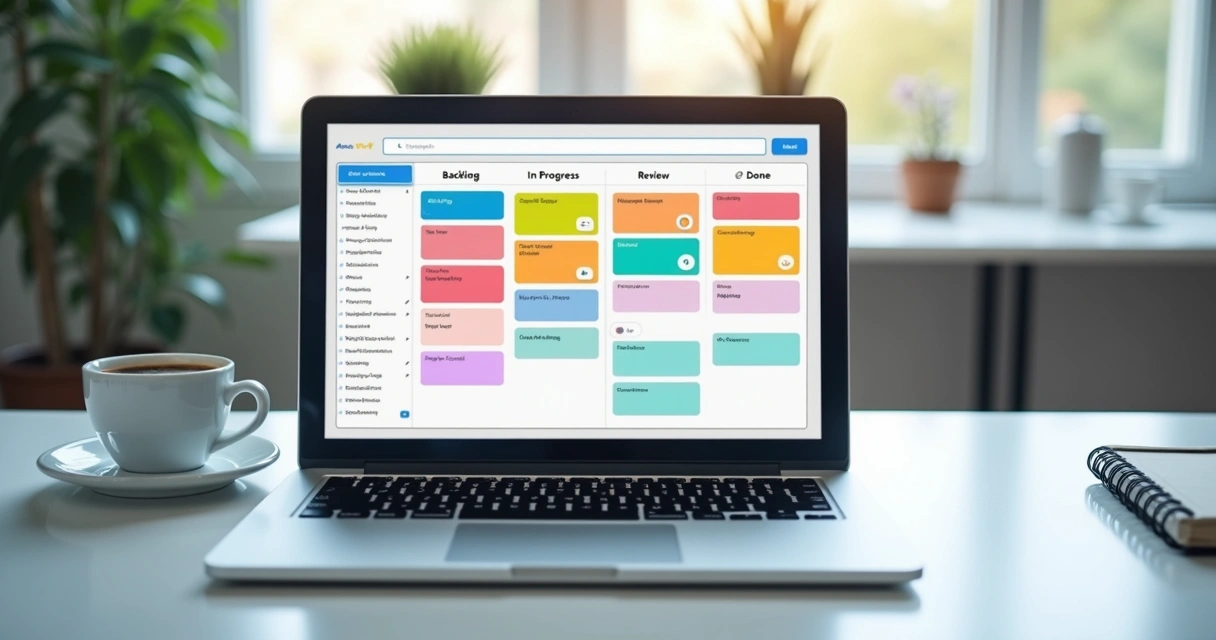When I first launched my own SaaS platform, I found managing tasks to be one of the toughest challenges. It wasn’t the coding or even the business vision—it was seeing ideas slip into chaos. Then I discovered the Agile backlog. It didn’t happen instantly, but this approach changed the way I work. Today, I want to share what I’ve learned about building and maintaining an Agile backlog, so tech founders like you can save time, focus, and maybe even sleep better.
Understanding the Agile backlog
An Agile backlog is a prioritized list of tasks, features, and fixes needed for a product’s ongoing development. Instead of clinging to a perfect plan, it lets you organize what matters most right now, while leaving space for new ideas or sudden changes. When I started using this method, it felt freeing and, to be honest, a bit overwhelming at first.
Studies from the U.S. Government Accountability Office explain how Agile processes can reduce risk in large projects by making steady improvements instead of big, risky jumps. It’s practical. Not perfect. But for me, that was the point.
 What goes into a good Agile backlog?
What goes into a good Agile backlog?
When I work with founders at DeMeloApps or build my own projects, I start each backlog with a mix of small and big ideas. Here’s what I’ve seen work:
- Clear user stories based on real needs
- Detailed tasks or “tickets” for bugs or quick fixes
- Features the team wants to try, even those that may never become a priority
- Technical debt or behind-the-scenes improvements
The U.S. Digital Service’s guide to Agile project management stresses the need for collaboration, not just following fixed plans. In my experience, this is the heart of the backlog: You build a living list that matches your team’s energy and your users’ demands, not just your original idea.
How I prioritize features and tasks
Every founder I meet struggles with priorities. Should we fix this bug or ship that shiny new feature? I use a simple approach:
- Always ask: Who needs this right now? If there’s a user facing a big pain point, that item goes up the list.
- Business value next. Will this task help us reach our goals, attract new users, or improve revenue?
- Team reality. Do we have the right skills available this sprint?
- Mood and momentum. Sometimes, knocking out easy tasks keeps spirits high, so I’ll shuffle the list a bit. Perhaps it’s not by the book, but it feels right.
I’ve seen some teams use weighted scoring or more detailed frameworks, but honestly, a simple question—how badly do we need this, and for whom?—gets you 80% of the way.
There’s this example I heard at DeMeloApps: we were working with a startup that wanted both a flashy dashboard and better onboarding. Users were getting lost, so even though the dashboard felt more “exciting”, onboarding fixes won, and we watched churn drop the very next week.
Clarifying user stories and acceptance criteria
Early in my career, I wrote user stories that were a line or two, usually vague and sometimes cryptic. Later, I learned that a good user story is a conversation starter, not a contract. Here’s how I handle them now:
- Include the “who,” “what,” and “why” every time (e.g., “As a new user, I want a guided tour, so I know where to begin.”)
- Keep acceptance criteria short and clear—what does “done” really mean?
- Review with the team, not alone. This is where I miss the most if I skip it.
It matches the U.S. Digital Service's idea: people over process, working software over documentation. When I help founders using the MVP Builder at DeMeloApps, this kind of clarity stops a lot of churn later.
Handling changing requirements with limited resources
If you’ve built anything in tech, you know this: things change. Fast. A feature you loved yesterday feels pointless after one user interview. Here’s the trick I found with Agile backlogs:
Change is expected. Don’t let it throw your plan off—make it part of the plan.
I block off time each week to review the backlog. The GAO’s report describes incremental development as a way to avoid building outdated technology. I sometimes reshuffle priorities, drop things entirely, or add new feedback from customer calls. It can create confusion if you’re not open about why the list moves, so I always communicate shifts to everyone involved.
With small teams and tight budgets, I cut features mercilessly. If it’s not delivering value now, it waits—sometimes forever.
 Real-world backlog management tools I rely on
Real-world backlog management tools I rely on
For me, the actual tool doesn’t matter as much as the habit. Still, here’s what has worked:
- Sticky notes or a whiteboard for early brainstorming with the team (even remote, I’ll use shareable digital equivalents)
- Simple kanban boards with columns like “To Do”, “Doing”, “Review”, and “Done”
- Spreadsheet for founders on a tight budget—just being able to sort and filter can make all the difference
- Any software that lets me tag, prioritize, and comment on tasks, especially if it integrates with other apps my team uses
I always recommend teams start with basic systems and only upgrade when the process breaks down. Spending too much time making the backlog “look pretty” is a trap I fell into once—I regret it.
Balancing speed and quality in continuous development
This part, honestly, is less about the backlog itself and more about the flow. The Western Governors University guide says to keep sprints short and add daily check-ins. I follow this; I make progress easy to see with short, focused cycles.
But when you’re a founder, you want to ship fast without making mistakes. Here’s what I do:
- Set “definition of done” so the team knows when a task is ready—not almost done, not code that “works on my machine.”
- Review work as soon as possible. I try for same-day review if I can.
- Plan releases around user feedback points, not just arbitrary dates.
Studies from Brigham Young University confirm that Agile improves team communication and output, but also that it takes time to adjust. Finding this speed-quality balance is ongoing—I still make adjustments all the time.
For founders looking to automate or scale, a strong backlog can anchor operations. I’ve worked with many startups through DeMeloApps, guiding them from idea to prototype using our MVP Starter approach. Our project cost estimation tool helps teams forecast development with realistic timeframes, relying on well-defined backlog items to avoid surprises.
If you’re curious about my background, you can learn more from our about us page at DeMeloApps, where we turn backlogs into working products for startups in Vancouver and beyond.
Conclusion
Managing an Agile backlog as a tech founder isn’t about always having the right answer—it’s about having a good enough plan for today, and the courage to change it tomorrow. The goal is not a perfect backlog, just one that keeps moving your idea forward. If you’re ready to see your vision become reality, or just want a better handle on task chaos, DeMeloApps can guide you, from MVP concept to delivered software. Reach out for a free chat or an estimate—let’s turn your backlog into a product people love.
Frequently asked questions
What is an agile backlog?
An Agile backlog is a prioritized list of features, tasks, bugs, and improvements that your development team manages during a product’s lifecycle. It acts as the team’s to-do list, constantly updated as new needs are discovered or old ones drop in importance.
How to prioritize tasks in backlog?
I ask who needs this most, weigh business impact, and consider available skills. For each backlog entry, I assess urgency, value, and the effort required. Sometimes I rely on user pain points, sometimes on business strategy, but always keep the process flexible.
What tools help manage agile backlogs?
Simple kanban boards, spreadsheets, or digital card systems work well. I’ve used whiteboards, cloud task managers, and even sticky note apps—anything that lets you update, move, and review items easily with your team.
How often should I update backlog?
I review the backlog at least weekly or after each sprint. Some teams, as recommended by Agile best practices, do it even more often, especially if the project is moving fast or requirements are shifting rapidly.
What are common backlog management mistakes?
One of the main pitfalls is making the backlog too long or vague, which turns it into a dumping ground instead of a planning tool. Other mistakes include not keeping priorities clear, failing to update regularly, or allowing tasks to linger without review. It’s about discipline and focus, not just documentation.





